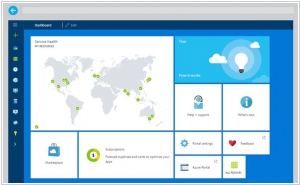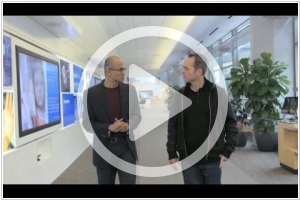Microsoft Azure is #2 in Top 10 Public Cloud Platforms
Microsoft Azure is an open and flexible cloud platform that enables you to quickly build, deploy and manage applications across a global network of Microsoft-managed datacenters. You can build applications using any alternative language, tool or framework. And you can integrate your public cloud applications with your existing IT environment.
Positions in ratings
#2 in Top 10 Public Cloud Platforms
#2 in Top 10 AI Platforms
Alternatives
The best alternatives to Microsoft Azure are: Amazon Web Services, Google Cloud Platform
Latest news about Microsoft Azure
2023. ChatGPT comes to Microsoft Azure
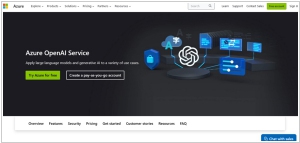
Microsoft has officially announced the general availability of ChatGPT, which can now be accessed through the Azure OpenAI Service. This service, tailored for enterprises, offers a fully managed platform with additional governance and compliance features to ensure businesses can leverage OpenAI's technologies effectively. ChatGPT now joins a lineup of other OpenAI-developed systems already provided via the Azure OpenAI Service, including the text-generating GPT-3.5, code-generating Codex, and image-generating DALL-E 2. Microsoft maintains a strong collaborative partnership with OpenAI, marked by substantial investments and an exclusive agreement to commercialize OpenAI's AI research.
2021. Microsoft launches Azure Container Apps, a new serverless container service
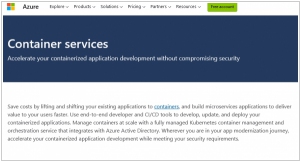
Microsoft has announced the preview launch of Azure Container Apps, a new serverless container service that is fully managed and complements their existing container infrastructure services such as Azure Kubernetes Service (AKS). Azure Container Apps is designed for microservices and offers rapid scaling based on HTTP traffic, events, or long-running background jobs. It shares similarities with AWS App Runner, one of Amazon's serverless container services focused on microservices. Google also provides container-centric services, including Cloud Run, which is their serverless platform for running container-based applications.
2019. Microsoft launched cloud APIs for form and handwriting recognition
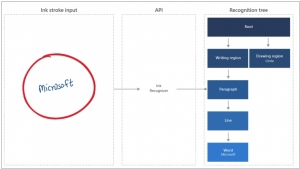
Microsoft has unveiled a range of new cognitive services on its Azure Machine Learning cloud platform, catering to various document-related needs and offering enhanced capabilities. Among these services are the Ink Recognizer and Form Recognizer, which enable the conversion of handwritten text and paper documents into digital text and data. Additionally, the Conversation Transcription service facilitates the transformation of phone dialogues into text, with the ability to identify the author of each phrase. Another notable addition is the Personalizer service, which delivers personalized recommendations to website and online store visitors based on their behavioral patterns. Furthermore, Microsoft has introduced a user-friendly visual interface for creating machine learning models, empowering marketers and other professionals to engage with machine learning. By simply uploading the database and specifying the desired predictive parameter, users can explore the potential of machine learning in their respective fields.
2019. Microsoft launched own Windows Virtual Desktop service
Microsoft has recognized the potential of offering virtual desktop services independently, despite its prior reliance on cloud partners. The introduction of the Windows Virtual Desktop service, now accessible for companies on the Microsoft Azure cloud platform, allows the installation of Windows, Office, and other software licenses on the cloud instead of employees' individual computers. Consequently, employees can access and work with their software through a virtual desktop. This approach offers several advantages. Firstly, it enables even older Windows 7 computers to operate efficiently while providing the benefits of Windows 10. Secondly, it offers convenience to administrators in terms of creating and maintaining new work environments while ensuring security measures. The Windows Virtual Desktop service itself is free, with costs incurred only for additional Azure resources consumed, such as memory and CPU time.
2018. Microsoft Azure gets new high-performance storage options
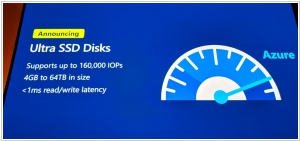
Microsoft is introducing a range of new storage options for Microsoft Azure, with a particular focus on scenarios that require high disk performance. One notable addition is the public preview of Azure Ultra SSD Managed Disks. These drives are designed to deliver extremely low latency, making them well-suited for workloads that demand quick response times. Additionally, Standard SSD Managed Disks have transitioned from preview to general availability within just three months. Moreover, Azure now offers expanded storage capacities of 8, 16, and 32 TB across all storage tiers, including Premium and Standard SSD, as well as Standard HDD. Another new addition is Azure Premium Files, which is currently in the preview stage. This service is also SSD-based and aims to provide improved throughput and reduced latency for SMB operations within Azure Files, a familiar cloud storage solution that uses the standard SMB protocol.
2017. Microsoft launched new archival storage option for Azure
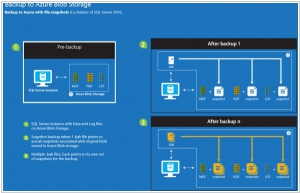
Microsoft has recently unveiled a new storage option, known as Azure Archive Blob Storage, for its cloud computing platform Azure. This addition offers developers a more cost-effective solution for storing large volumes of archival data, including logs, raw camera footage, audio recordings, transcripts, medical documents, and images. The key distinction between the "cool" and "archive" tiers lies in the pricing structure and accessibility of the data. While archival storage comes at a lower cost, the retrieval expenses are higher. Additionally, data stored in the archive tier is not readily available for immediate access. The stored blobs undergo a process of "rehydration," which can take up to 15 hours for blobs holding less than 50GB of data. It is worth noting that Amazon Glacier and Google Near, which provide similar cold storage services, have been established options for several years.
2017. Microsoft launches new tools to help enterprises move to its Azure cloud
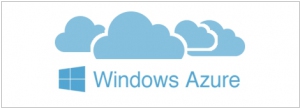
According to Microsoft, a significant majority (80 percent) of the companies it engages with express a desire to adopt a hybrid cloud approach. In response to this demand and to facilitate their transition to the company's cloud platform, Azure, Microsoft is introducing a range of new tools. One of the key offerings is the Cloud Migration Assessment service, which enables companies to assess their current IT infrastructure and receive an estimate of the costs associated with migrating their services to Azure, along with potential savings. Moreover, Azure users now have the opportunity to receive a discount when they transfer their Windows Server licenses (with Software Assurance) to Azure. Known as the Azure Hybrid Use Benefit, this benefit can lead to savings of up to 40 percent, making it more enticing for existing Windows Server users to shift their workloads to the cloud. Additionally, for those interested in making this transition, the Azure Site Recovery (ASR) tool is receiving a minor update. While primarily designed to assist enterprises in coordinating their disaster recovery plans, it can also be leveraged for migrating existing virtual machines to Azure.
2014. Following SAP and Oracle, IBM jumps to Microsoft Azure
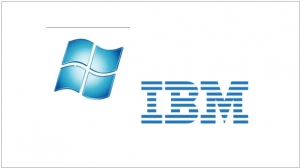
Microsoft has formed partnerships with SAP and Oracle for its cloud-computing platform, and now IBM has joined as the newest partner in Microsoft's enterprise software layer. As part of the agreement, IBM middleware, including WebSphere Liberty, MQ, and DB2, will be accessible on Microsoft Azure, while IBM Cloud will offer Windows Server and SQL Server. Additionally, Microsoft's .NET runtime will be made available on IBM's Bluemix cloud development platform. With these collaborations, Microsoft can proudly claim to have the Big Four integrated into its enterprise-focused cloud platform.
2014. Microsoft Azure appliance makes comeback

Microsoft is introducing a fresh Azure appliance that enables companies or service providers to implement it within their own data centers. Dubbed the Cloud Platform System, this novel appliance will operate using identical Azure APIs, services, hypervisor, and all other components as the Azure public cloud, while effortlessly establishing connections with the Azure public cloud. Notably, Microsoft's past exploration of Azure appliances adds to the appeal of this appliance. Previously, the company had contemplated selling appliances to select large service provider partners, like HP, and had even launched a program to assist web hosts in launching their own versions of Azure. However, both initiatives seemed to have been abandoned due to various business and technological factors. Nevertheless, the appliance has made a resurgence.
2014. Microsoft and Docker team up to make containers play nice on Windows Server and Azure
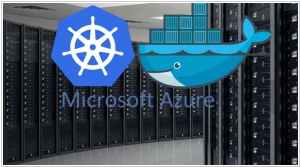
Microsoft and Docker have joined forces to ensure complete compatibility between Docker's container technology and the upcoming release of Windows Server. This partnership aims to provide developers with a native version of the Docker engine that operates seamlessly within the Windows environment. Previously, Microsoft enabled Docker usage on its Azure cloud platform, but developers had to perform several tasks to initiate container deployment. With this collaboration, the process of spinning up Docker containers on Azure becomes significantly simplified. Developers will no longer need to make modifications, as they will gain direct access to the Docker Hub within the Azure management portal, facilitating easy container deployment.
2014. Microsoft Azure now also supports Google's Kubernetes
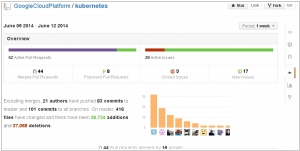
A few days ago, we mentioned that VMWare's vCloud had integrated support for Google's open-source container technology, Kubernetes. Now, Microsoft is joining in and extending its support for Kubernetes on its Azure cloud platform. This move is rather surprising considering that both Google and Microsoft haven't been widely recognized for their involvement in open-source initiatives. However, their aim is to capture market share from Amazon Web Services by enabling cloud developers to transition between cloud platforms with relative ease while maintaining a consistent experience in launching and managing applications. In addition to Google, Microsoft, and VMWare, other major players such as Red Hat and IBM have also recently embraced this technology, indicating that it is likely to become the industry standard for cloud platforms.
2014. Microsoft unveils Azure DocumentDB, a NoSQL database as a service
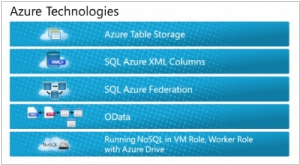
Microsoft is once again expanding its Azure platform with the introduction of Azure DocumentDB, a NoSQL database service. In comparison to other services developed by cloud providers, DocumentDB bears resemblance to Google's Cloud Datastore, which is also understated, rather than Amazon Web Services' DynamoDB, which is more akin to a key-value store than a document database. Alongside this offering, Microsoft's new Data Platform includes Azure Search and a fully managed HBase component within the HDInsight Hadoop service. These new products showcase the type of innovation that Microsoft must prioritize in order to attract new developers and effectively compete in the cloud.
2014. Microsoft improves Windows Azure security with enhanced encryption
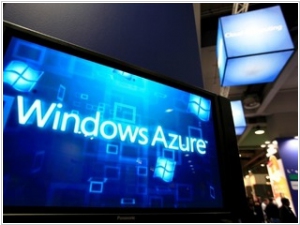
Microsoft is strengthening the encryption of data transfers between users and the Azure cloud guest operating systems. These enhancements, applicable to the hosted guest virtual machines' Microsoft Azure cipher solution, provide users with improved and more secure connections during data transmission. The upgrades primarily focus on Transport Layer Security (TLS) and Secure Socket Layer (SSL), making it increasingly difficult for connections to be decrypted and the information within them to be accessed. This initiative aligns with recent efforts by Google to enhance email security and encryption for services like Outlook.com and OneDrive. Furthermore, Google announced last year that data stored in its Cloud Storage system would be automatically encrypted to ensure user privacy and security.
2014. Microsoft unveiled Artificial Intelligence platform on top of Windows Azure
Just like how the super-smart robot Marvin in "The Hitchhiker's Guide to the Galaxy" was often given simple instructions leading to his perpetual state of depression, a similar problem arises in Cloud Computing. Presently, Cloud Computing primarily serves as a means for straightforward data storage. We upload data to the Cloud and retrieve it when needed. However, this scenario is bound to evolve as the Cloud itself becomes more intelligent. Major IT players are devoting serious efforts to advance intelligent data processing technologies. IBM has developed Watson, Google acquired DeepMind, and now Microsoft is introducing Azure Machine Learning, a cloud platform enabling developers to swiftly build applications for predicting the future. For instance, these applications can assist traders in purchasing only the products that will have demand or aid manufacturers in proactively repairing equipment before it malfunctions.
2014. Satya Nadella - new Microsoft CEO
So, instead of Steve Ballmer, the showman, Microsoft will now be led by Satya Nadella, a tech-savvy individual. Check out this video, which features his first interview as CEO. Nadella, who is 46 years old, has been with Microsoft for 22 years. Prior to his appointment, he headed the Cloud and Enterprise department. During his tenure, Microsoft Business Services experienced tremendous growth, with the segment expanding from a $1.5 billion slice of the pie to a $5 billion segment in just five years. Nadella played a key role in the development of various products, including Windows Azure, Office 365, Bing, SkyDrive, Xbox Live, Skype, and Dynamics. In his initial email to employees, Nadella emphasized the need for Microsoft to reimagine its mobile and cloud strategy. Interestingly, Bill Gates is stepping down from his position as Microsoft chairman and will now provide guidance to Nadella on future technologies during his free time.
2013. Microsoft pushing Cloud OS
As you know, Microsoft's Windows Azure is the leader in cloud platform market. It's just one of several options along with Amazon Web Services, Google Compute Engine, OpenStack, VMWare vCloud. This situation is very frustrating for Microsoft, which used to be the exclusive platform (OS) vendor. Therefore, Microsoft is coming up with a new thing - Cloud OS. This is not a specific product, but rather a marketing term incorporating several systems: first of all Windows Azure, Windows Server and System Center. The idea is that the Cloud (the legendary thing that stores and processes data) is usually located not in the farm of specific provider (Amazon, Google or Microsoft). It also lives in a rented or own Internet servers and in the office (on local servers). Depending on task, budget and security requirements, each company may choose on where to host data and applications. ***
2012. Microsoft to push Windows Azure via service-providers

So where does the truth lie? As you may be aware, Microsoft recently disrupted its longstanding PC manufacturing partnerships by introducing its own Surface tablet. However, when it comes to the cloud platform market, Microsoft has opted to deviate from the "Do it yourself" approach and is now extending an invitation to partners to collaborate. Consequently, hosting providers will now have the opportunity to offer a white-labeled Windows Azure cloud platform. This strategy has already proven successful for VMWare (vCloud) and OpenStack. Microsoft, as you may know, boasts an extensive network of partners, including service providers who host Windows Server. With this new development, they can now also provide customers with Azure or offer Azure services based on the Windows Server platform. It's worth noting that Windows Azure is also available in packaged form for constructing private clouds in large corporations.
2012. Windows Azure provides Linux as a Service
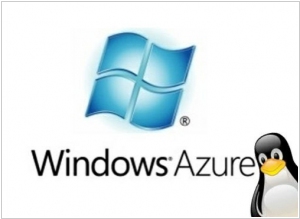
Once Linux was the main threat to the bright future of Windows and now Microsoft provides Linux as a component of its cloud platform Windows Azure. And that's because the purely Microsoft-oriented cloud - was not very competitive in the fight against Amazon, RackSpace, VMWare, Oracle, Google and other providers. So, Windows Azure becomes not just PaaS, but also IaaS platform. Users can create Linux or Windows virtual servers and pay for them on per-hour basis, just like at Amazon Web Services. Available Linux distributives include Ubuntu, SUSE and CentOS. Perhaps Microsoft will soon also partner with Red Hat. But Linux as a Service - is not the only interesting update at Azure. ***
2012. OpenStack launches. CloudStack departs. Amazon adapts SAP. Azure rebrands
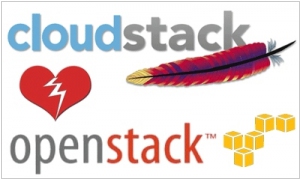
Here is the news digest from the leading cloud platforms. First of all, the open-source platform OpenStack (aka Linux for the clouds) which had been developed for two years by the alliance of IT giants (Rackspace, NASA, Citrix, Intel, AMD, Cisco, Dell, HP, IBM ...) - finally comes to production. Since May 1, it was adapted by RackSpace for its service Rackspace Cloud Files and last week HP launched the public beta of its HP Cloud platform, based on OpenStack. However, a week before the launch the trouble (common for open-source projects) occurred with OpenStack. Citrix, which has been one of the first participants in OpenStack, suddenly decided to grant its own cloud platform - CloudStack - to Apache Software Foundation. Thus, CloudStack not flowed into OpenStack but became a rival project. Citrix explained this decision by the slow OpenStack development and unwillingness of other parties to integrate with Amazon Web Services APIs. ***
2011. SAP embracing Amazon and Microsoft clouds

SAP is the most slow IT giant in terms of transition to the cloud technologies. Nevertheless, it's the world's largest software company and any of its steps to the Cloud serves as an indicator for all large corporations: "if even SAP released a SaaS-solution, then SaaS-solutions can indeed be trusted" or "if even SAP offers a version for Amazon Web Services, than this platform is really enterprise-ready". This week at the SAPPhire conference, the company reported on its cloud transition steps. First of all, the SaaS ERP-service SAP Business ByDesign is already used by 500 with a target of having 1000 signed up by the end of the year. Second, SAP has announced that it's "launching" the SaaS CRM-service SAP Sales OnDemand, which will be followed by a travel management cloud service and an on-demand suite for talent management. And third, SAP has started to adapt its existing systems for the Amazon and Microsoft cloud platforms. ***
2010. Windows Azure is already sold in boxes
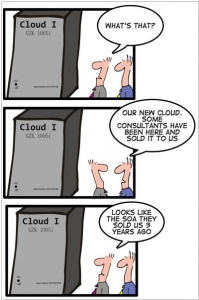
Though there is a big deal of debates around the "private cloud" term (if it's correct to call own data center, optimized with virtualization technology, a "cloud") - no one can deny that these things called "private cloud" are already selling well. The fact is that many companies are still not ready to move their IT infrastructures to public cloud platforms like Amazon EC2 and Windows Azure. But when they are told that "you can take the advantage of Cloud Computing (cost-efficiency, scalability) without any risk for data security, because the cloud will be locked in your office" - they like this. Obviously, private clouds are the necessary intermediate stage of transition companies to "real clouds" and cloud providers have to take a step back so that the process started. So it was with Microsoft. ***
2010. Zuora to become a billing provider for Windows Azure
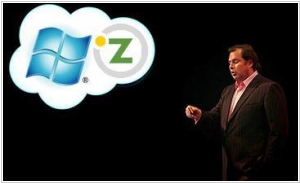
In a notable development, Zuora, a service that facilitates seamless monthly payment collection for SaaS companies, has been selected as the first on-demand billing and subscription management provider to join the Microsoft Windows Azure Technology Adoption Program (TAP). This collaboration allows SaaS services on the Azure platform to effortlessly integrate their products with the billing system. As a result, they can offer customers a diverse range of flexible payment plans based on factors like disk space, number of users, and number of projects. Additionally, they can generate invoices, accept payments through various payment systems, and generate various sales reports. Interestingly, it's worth noting that Zuora is supported by Marc Benioff, the CEO of Salesforce, a company engaged in fierce competition with Microsoft.
2010. Windows Azure - available. Google Apps Store - soon.
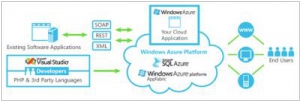
Today Microsoft has officially opened its cloud platform Windows Azure. It's a cloud for deploying SaaS services and hosting enterprise applications, that provides Microsoft-focused infrastructure and development tools. However, Azure also supports PHP, MySQL, Ruby on Rails, Python, Java, Eclipse and Zend. The main Azure advantage over Amazon Web Services and Rackspace Cloud is the high level of automation, allowing developers to focuse on their applications, rather than on the infrastructure. In addition, this platform enables to integrate hosted apps with the local IT infrastructure with the help of SOAP, REST and XML (thus supporting Microsoft's S+S strategy). The cost of using Windows Azure - is lower than the cost of Windows-infrastructure, built on Amazon. ***
2010. Microsoft and HP to sell Clouds together
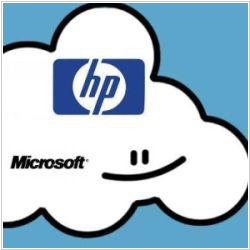
Cloud Computing can be deployed not only in platforms like Amazon, Google App Engine or Windows Azure. The Cloud becomes a popular solution, needed by large enterprises, service providers and large SaaS companies. And the competition on this market is so high that even such giants as Microsoft and HP prefer not to play alone. Today the companies announced the alliance for creation and sale of cloud-solutions. The partnership is valued at $250 million. Microsoft and HP already have an experience of creating the Windows Azure cloud, that runs on HP gear. Microsoft-HP cloud solutions will obviously provide a high level of integration between hardware and Windows-based software environment. ***

